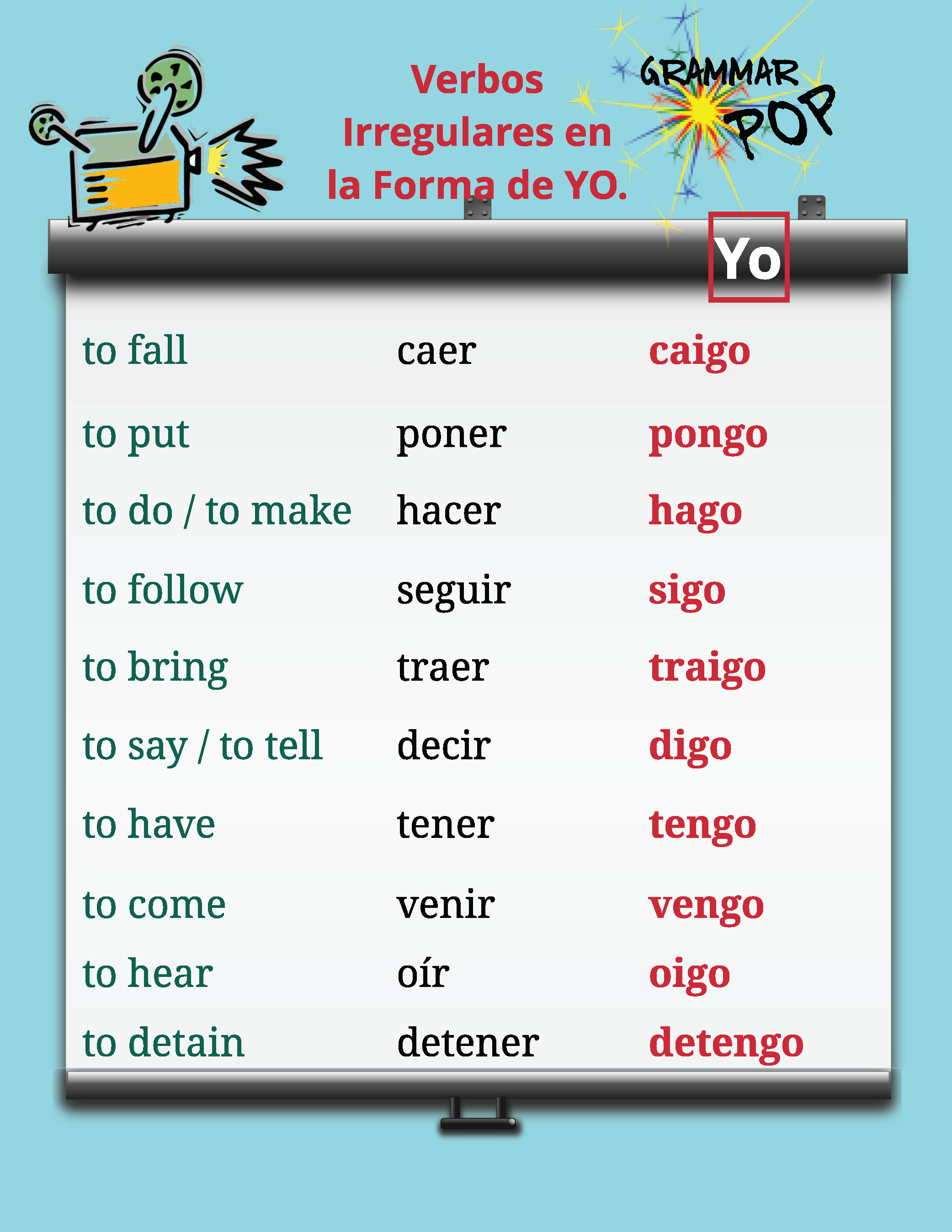

Regular AR verbs are conjugated in the present tense like this: In the present tense, AR verbs are conjugated differently than ER and IR Verbs.
#Spanish yo forms to go how to#
The first tense you’ll learn how to conjugate for is the present tense, or el presente. A good one can be found on Fluentin3months. It's important to keep this in mind, and you may want to keep a list of irregular verbs and their proper conjugations. They break the rules you're about to learn. However, some verbs are irregular, meaning they get conjugated differently. In other words, Spanish verbs ending in AR are conjugated differently than verbs ending in ER and IR.įor the most part, what you'll learn in this article applies to any verb in the Spanish language. There are different rules for conjugation depending on the last two letters of these verbs.

* Indicates verb has irregular conjugations


See how the verb tense effects the way we conjugate? The concept applies the same in Spanish. In English, different tenses produce verb conjugations such as: With those in mind, usually conjugations include the root of the word being conjugated minus the last two letters of the verb (ar, er, or ir). It’s much more complicated in Spanish, as you’ll learn, but the same concept applies.Ĭonjugating verbs in Spanish requires an understanding of a few different concepts: You just add "ed" to the root verb and listo! The past tense is really easy to conjugate in English. We can visualize these differences in conjugation with the chart below. Notice how we conjugate the verb differently depending on the perspective (who) and the tense (when). In English, we conjugate verbs by changing verbs like to run into he runs, I run, and we ran.
#Spanish yo forms to go for free#
You can download it for free on yourĪndroid. If you want over 400,000 Spanish verb conjugations with you where ever you go, try Spanish Translator + app. You will find charts to master Spanish verbs ending in IR, ER, AR and more. This guide will help you learn how to conjugate verbs correctly for past, present and future tenses. Conjugating verbs in Spanish is one of the most challenging parts of learning Spanish as a second language.


 0 kommentar(er)
0 kommentar(er)
